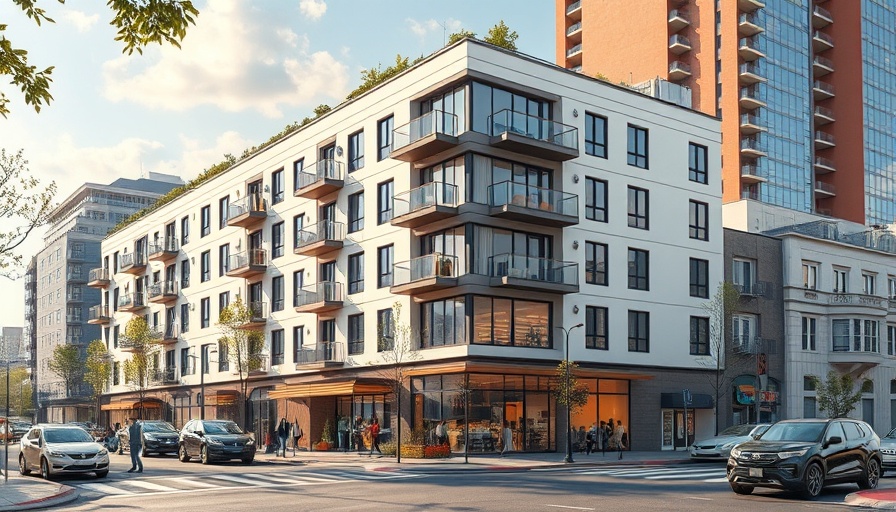
Redefining Affordable Housing for Artists
In the heart of downtown San Jose, the Arya Apartments are breaking new ground in the realm of affordable housing. Designed specifically for working artists, this innovative project offers 87 affordable apartments that combine living space with communal artistic opportunities. The design features a vibrant exterior, reflecting the dynamic energy of the South of First Area (SoFA) Arts and Entertainment District, serving as a bridge between urban high-rises and historic neighborhoods.
Community Focus: A Collaborative Approach
The Arya Apartments don't just provide housing; they create a community hub. Through a partnership with Local Color, a San Jose arts organization, the project includes a versatile community flex space available for classes, galleries, and performances. This emphasis on community integration highlights the importance of social connections in creative professions, enabling artists to collaborate and support each other.
Responsible Development: Balancing Density and Affordability
Utilizing California's State Density Bonus Program, the Arya Apartments were able to increase their number of units while navigating the state's expedited affordable housing approval processes. This strategic approach not only streamlines construction but also fulfills an essential need: providing affordable living options for artists who often struggle to find suitable housing amidst rising costs. Such initiatives are critical as they set a precedent for future developments aimed at supporting creative communities.
Design Elements That Inspire Creativity
Designed by Leddy Maytum Stacy Architects, Arya Apartments incorporate features that encourage creativity and enhance the living experience. The building includes common areas and workspaces that double as galleries, giving artists a place to showcase their work. Landscaped courtyards provide a serene environment for inspiration, showcasing a deep understanding of how space can influence artistic output.
The Future of Affordable Housing for Artists
The Arya Apartments are not just a place to live; they are a model for future developments in affordable housing tailored for the creative class. As cities grapple with rising housing costs, projects like this demonstrate that it is possible to blend affordability with community-centric design. Looking ahead, we may see more developers adopting similar models, prioritizing both housing and the artistic ecosystem that thrives within cities.
By investing in spaces that support artists, urban planners and developers can foster a vibrant cultural landscape that benefits entire communities. This shift towards more inclusive and functional living spaces is vital for those in creative industries, ensuring they have the resources and environment they need to flourish.
For business owners and developers, the Arya Apartments serve as a compelling case study in how to balance economic feasibility with social responsibility. Understanding the unique needs of artists can lead to innovative housing solutions that revitalize urban areas and cultivate rich cultural experiences.
 Add Row
Add Row  Add
Add 




Write A Comment